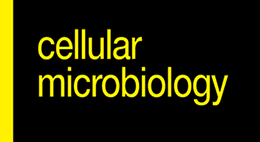Data from: Chromatin bound bacterial effector AnkA recruits HDAC1 and modifies host gene expression
Control of host epigenetics is becoming evident as a mechanism by which symbionts and pathogens survive. Anaplasma phagocytophilum, an obligate intracellular bacterium, downregulates multiple host defense genes where histone deacetylase 1 (HDAC1) binds and histone 3 is deacetylated at their promoters, including the NADPH oxidase component, CYBB. How HDAC1 is targeted to defense gene promoters is unknown. Ankyrin A (AnkA), an A. phagocytophilum T4SS effector, enters the granulocyte nucleus, binds stretches of AT-rich DNA and alters transcription of antimicrobial defense genes, including downregulation of CYBB. Here we found AnkA binds to a predicted matrix attachment region in the proximal CYBB promoter. Using the CYBB promoter as a model of cis-gene silencing, we interrogated the mechanism of AnkA-mediated CYBB repression. The N-terminus of AnkA was critical for nuclear localization, the central ANK repeats and C-terminus were important for DNA binding, and most promoter activity localized to the central ANK repeats. Furthermore, a direct interaction between AnkA and HDAC1 was detected at the CYBB promoter, and was critical for AnkA-mediated CYBB repression. This novel microbial manipulation of host chromatin and gene expression provides important evidence of the direct effects that prokaryotic nuclear effectors can exert over host transcription and function.


